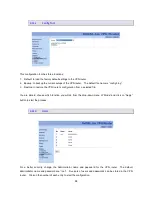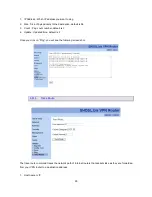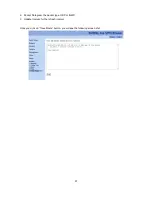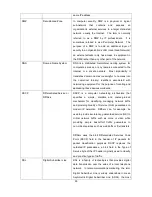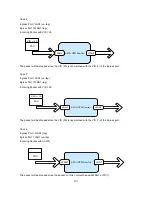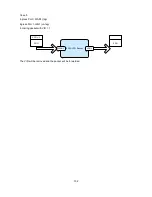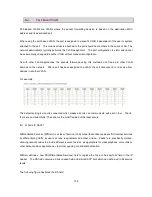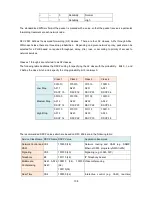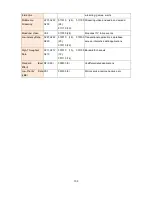
95
the user changes ports and needs access to the same
VLAN, the network administrator must manually make
a port-to-VLAN assignment for the new connection.
PPPoA
Point-to-Point Protocol
over ATM
PPPoA and PPPoE are authentication and connection
protocols used by many service providers for
broadband Internet access. These are specifications
for connecting multiple computer users on an Ethernet
local area network to a remote site through common
customer premises equipment, which is the telephone
company's term for a modem and similar devices.
PPPoE and PPPoA can be used to office or building.
Users share a common Digital Subscriber Line (DSL),
cable modem, or wireless connection to the Internet.
PPPoE and PPPoA combine the Point-to-Point
Protocol (PPP), commonly used in dialup connections,
with the Ethernet protocol or ATM protocol, which
supports multiple users in a local area network. The
PPP protocol information is encapsulated within an
Ethernet frame or ATM frame.
PPPoE
Point-to-Point Protocol
over Ethernet
PVID
Port VID
PVID is an untagged member from 1 to 4094 of default
VLAN.
QoS
Quality of Service
In the field of computer networking and other
packet-switched telecommunication networks, the
traffic engineering term quality of service (QoS) refers
to resource reservation control mechanisms rather than
the achieved service quality. QoS is the ability to
provide different priority to different applications, users,
or data flows, or to guarantee a certain level of
performance to a data flow.
RIP
Routing Information
Protocol
The Routing Information Protocol (RIP) is a dynamic
routing protocol used in local and wide area networks.
As such it is classified as an interior gateway protocol
(IGP). It uses the distance-vector routing algorithm.
It was first defined in RFC 1058 (1988). The protocol
has since been extended several times, resulting in RIP
Version 2 (RFC 2453). Both versions are still in use
today, however, they are considered to have been
made technically obsolete by more advanced
techniques such as Open Shortest Path First (OSPF)








